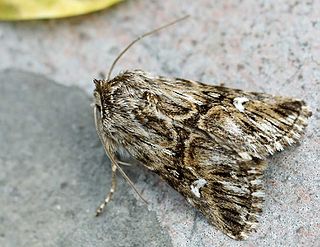Bastard toadflax or bastard-toadflax is a common name for a plant which may refer to:
Bastard toadflax or bastard-toadflax is a common name for a plant which may refer to:
Sycamore is a name which has been applied to several types of trees, but with somewhat similar leaf forms. The name derives from the ancient Greek συκόμορος (sūkomoros) meaning "fig-mulberry".

Linaria is a genus of almost 200 species of flowering plants, one of several related groups commonly called toadflax. They are annuals and herbaceous perennials, and the largest genus in the Antirrhineae tribe of the plantain family Plantaginaceae.
Toadflax is the common name of several related genera of plants in the family Plantaginaceae, including:

Aaron's beard may refer to the following plants having numerous stamens or threadlike runners:

Linaria vulgaris, the common toadflax, yellow toadflax or butter-and-eggs, is a species of flowering plant in the family Plantaginaceae, native to Europe, Siberia and Central Asia. It has also been introduced and is now common in North America.
Pellitory may refer to:
Bulletwood is a common name for several plants or trees and may refer to:

Barnsley Warren is a 61.3-hectare (151-acre) biological Site of Special Scientific Interest in Gloucestershire, notified in 1954 and renotified in 1984. The site is also included in A Nature Conservation Review. It lies in a steep-sided dry valley, east of the A429, northeast of Cirencester in the Cotswolds. The site is listed in the 'Cotswold District' Local Plan 2001-2011 as a Key Wildlife Site (KWS).

Comandra is a monotypic genus containing the single species Comandra umbellata. Its common names include bastard toadflax, umbellate bastard toadflax, and common comandra. The plant has a disjunct distribution; its four subspecies occur in North America and the Mediterranean.
Bully tree is a common name for several neotropical trees in the family Sapotaceae and may refer to:

Calophasia lunula is a Palearctic species of noctuid moth known by the common names toadflax moth and toadflax brocade moth.
L. vulgaris may refer to:
Alkanet is the common name of several related plants in the borage family (Boraginaceae):
Bastard cabbage is a common name for several plants and may refer to:

Linaria dalmatica is a herbaceous, short-lived perennial plant native to western Asia and southeastern Europe that has become a weed in other areas. The family this plant now belongs to is the Plantaginaceae Family. Previously, it belonged to the Scrophulariaceae (Figwort) family. Its common names include Balkan toadflax, broadleaf toadflax, and Dalmatian toadflax. Linaria dalmatica has unique yellow flowers with an orange center that draw individuals to purchase them to display in their gardens. The distribution of L. dalmatica to North America can be attributed to use as a fabric dye, folk remedies and as an ornamental plant. However, it is now classified as a weed in both Canada and the U.S.A.

Brassey is a 2.1-hectare (5.2-acre) biological Site of Special Scientific Interest in Gloucestershire, notified in 1954 and renotified in 1983. It is situated on the north side of the Windrush Valley, midway between Naunton and Upper Slaughter. The reserve comprises sloping, unimproved limestone pasture. There is a fast-flowing stream. This site is one of the few freshwater marshes in Gloucestershire. The stream joins the River Windrush.
Bastard rocket is a common name for several plants and may refer to:

Linaria repens, also known as pale toadflax or creeping toadflax in Europe and as striped toadflax in the US, is an herbaceous plant in the family Plantaginaceae, native to Europe.

Thesium humifusum is a species of hemiparasitic flowering plant in the family Santalaceae found in western Europe and north-western Africa, known as bastard-toadflax.

Thesium humile is a species of annual herb in the family Santalaceae. They have a self-supporting growth form and simple, broad leaves. Individuals can grow to 0.2 m.